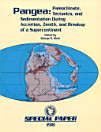Planetary Surface Processes
এই ই-বুকের বিষয়ে
লেখক সম্পর্কে
H. Jay Melosh is Distinguished Professor of Earth and Atmospheric Science at Purdue University. His principal research interests are impact cratering, planetary tectonics and the physics of earthquakes and landslides. He is a science team member of NASA's Deep Impact mission that successfully cratered comet Tempel 1 on July 4, 2005. Professor Melosh was awarded the Barringer Medal of the Meteoritical Society in 1999, the Gilbert prize of the Geological Society of America in 2001, the Hess Medal of the American Geophysical Union in 2008, and was elected to the U.S. National Academy of Sciences in 2003. He has published over 170 technical papers, edited two books and is the author of Impact Cratering: A Geologic Process (1988, Oxford University Press). Asteroid #8216 was named 'Melosh' in his honor.







